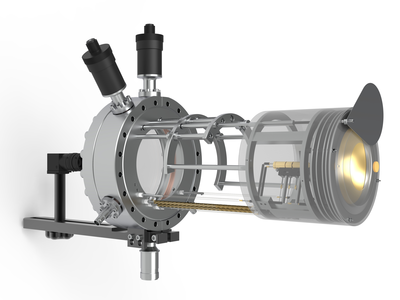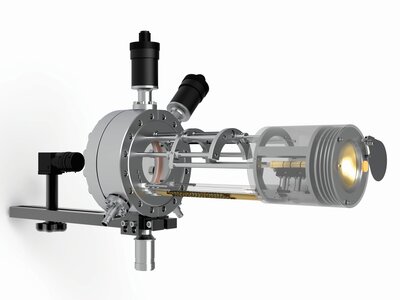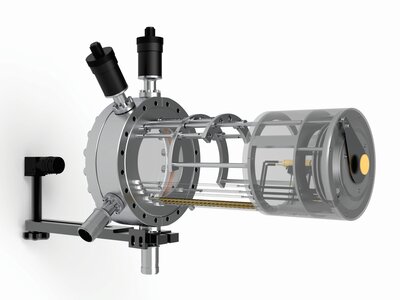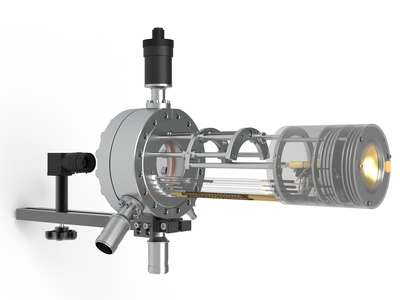Low Energy Electron Diffraction (LEED)
Low Energy Electron Diffraction (LEED) is a traditional surface science technique to examine the crystallinity of a given surface. In LEED, a focused beam of electrons, with a well defined energy of typically 30-500 eV, is directed at a surface. Due to the strong interaction with the surface, the electrons are subject to diffraction phenomena. If the surface is well-ordered (crystalline), it will act similar to a diffraction grating, giving intense diffraction maxima in certain directions, whereas no diffraction occurs for most other directions. These directions of maximum diffraction can be easily identified by phosphorescent screens in the LEED setup. The appearance of the geometrical pattern of the diffraction image on the phosphorescent screen allows in addition to draw conclusions about the 2D geometrical arrangement of the atoms on the surface. Thus, the information is two-fold: (1) If a regular diffraction pattern appears, one can conclude that the surface is long-range well ordered (crystalline) and (2) from the shape (symmetry) of the diffraction pattern one can extract information about the shape (symmetry) of the long range order of atoms on the surface. Notably, these diffraction effects can only be understood theoretically when using quantum-mechanical considerations.





